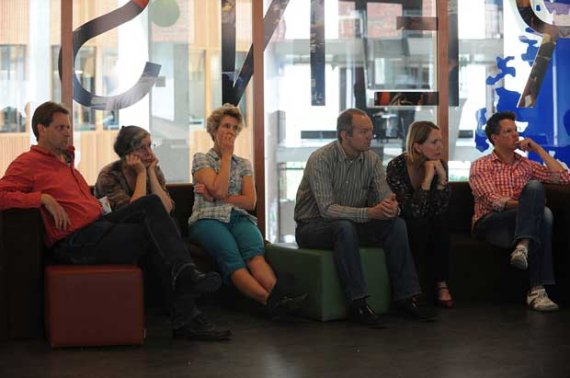Scenario 1 VHL continues as a single entity In this scenario the Van Hall Larenstein directors and management team soon come up with a plan for the applied university that enjoys the support of all the managers. The plan envisages a number of ‘unique’ VHL degree courses with national appeal offered at a single location (e.g. Animal Management), plus courses offered at more than one location (e.g. Animal Husbandry). Courses at multiple locations have to have the same learning outcomes and module structure for accreditation reasons. Management finds an approach that does justice to both kinds of degree course. The employees’ council also basically agrees with this plan. It still has its doubts about Ellen Marks as director but it supports the education policy. Ultimately the decision whether or not to keep Marks rests with the new supervisory board. Velp and Leeuwarden stay in their current locations but VHL Wageningen has to vacate Forum because of the costs. A new location is found in Wageningen (the staff want to stay there). But after a few years, an independent location turns out to be too expensive for such a small group. The solution is to build new premises on the campus in Velp. The Ministry also wants to keep VHL because it is a cornerstone in the system of agricultural and nature-related education. It appoints a new supervisory board, which in turn appoints the two or three members of the new executive board. One of the new supervisory board members can be specifically appointed with ‘the confidence of the employees’ council’.
Scenario 2
Splitting up and continuing as separate entities
In this scenario the directors, management team and employees’ council are unable to agree on a joint course with specific goals for the university of applied sciences. The mutual distrust between the locations continues and they cannot reach agreement on the package of courses to offer. However, the three locations are unable to survive as independent organizations and so VHL has to be divided up. ‘Leeuwarden’ joins NHL University of Applied Sciences in Leeuwarden; they already collaborate successfully in the Life Sciences course and NHL is keen to take over the flourishing Animal Management course. ‘Velp’ approaches HAN University of Applied Sciences; it has an eye on the Garden and Landscape Architecture course, which could bolster its ‘Arnhem, city of design’ profile. In this scenario ‘Wageningen’ looks to join Stoas/CAH Dronten. The advantage of this scenario is that the different VHL locations are firmly embedded in their region. Also, overheads are lower. But will these other applied universities want to take over ageing academic staff that have shown such a willingness to protest? Or will they just cherry pick the best courses and lecturers? A fragmented VHL does not have a strong bargaining position in this scenario. What is more, the Ministry of Agriculture is not in favour of dividing VHL up, in view of its responsibility for the overall system. It wants a recognizable group of agricultural and nature-related educational institutions and does not want any trouble within VHL. If the differences of opinion between the employees’ council and the directors persist, the Ministry may appoint an administrator (possibly via the supervisory board). The administrator takes a tough approach, which could mean a new board of directors as well as a staff reorganization to enforce unity.

